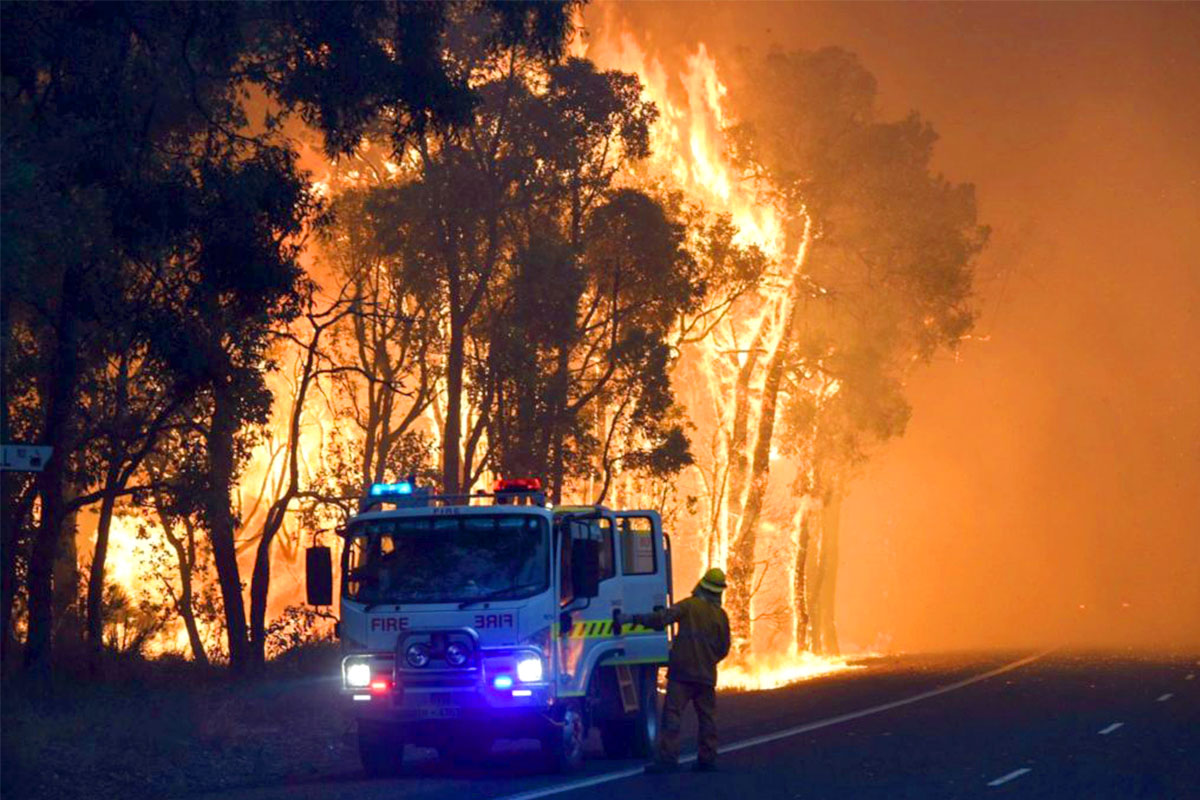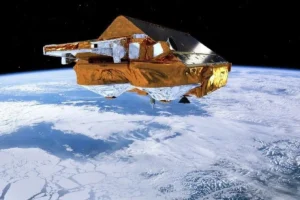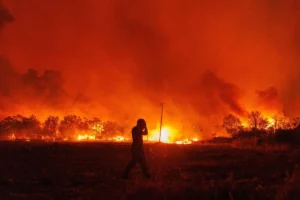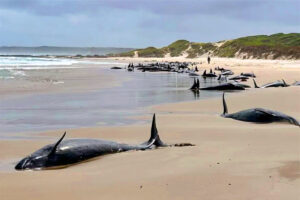Smoke rose into the stratosphere, where it raised temperatures and damaged the ozone layer.
Huge amounts of smoke from unprecedented wildfires that swept across Australia in the 2019-2020 season increased the temperature in the stratosphere and dramatically widened the ozone hole, a study has found.
More than 58 million hectares were burned in the worst fires Australia has seen in recent history. “There were parts of the coastline that remained under a veil of smoke for months,” says Nerily Abram of the Australian National University in Canberra, lead author of the paper in Scientific Reports, a Nature Group journal.
Smoke from wildfires rarely rises to the stratosphere, which is 10 to 50 kilometres high, but the Australian fires were so large and intense that they created conditions that favoured the transport of soot particles to heights of more than 35 kilometres.
Soot particles are black and absorb solar radiation, so they also heat the surrounding air. As a result, the temperature of the lower stratosphere rose by 3 degrees Celsius over Australia and 0.7 degrees globally.
Such an increase has not been recorded since the dramatic eruption of Mount Pinatubo in the Philippines in 1991, which sent huge amounts of ash into the stratosphere.
The effect of the fires “was equivalent to what we would see from a moderate volcanic eruption,” Dr Abram told the Nature website. “What we are discovering about the scale of these fires is remarkable.
The study used satellite data to track the distribution of smoke particles in the stratosphere. The data was fed into mathematical climate models that take into account the effect of particles on global climate.
Damage to the ozone layer
According to the climate model, the smoke also affected the stratospheric ozone layer through chemical reactions.
The ozone hole over Antarctica was unusually large (ESA)
As a result, the ozone hole that appears over Antarctica each spring grew dramatically. “In 2020, we were surprised by the very, very deep ozone hole” that remained over Antarctica for about five months.
The exact mechanism of the interaction between smoke and the ozone hole is still unclear, but should be unravelled as climate change increases the frequency and intensity of extreme fires.
What is clear is that ozone depletion in the stratosphere threatens the Earth because it protects the planet from the sun’s dangerous ultraviolet radiation.












